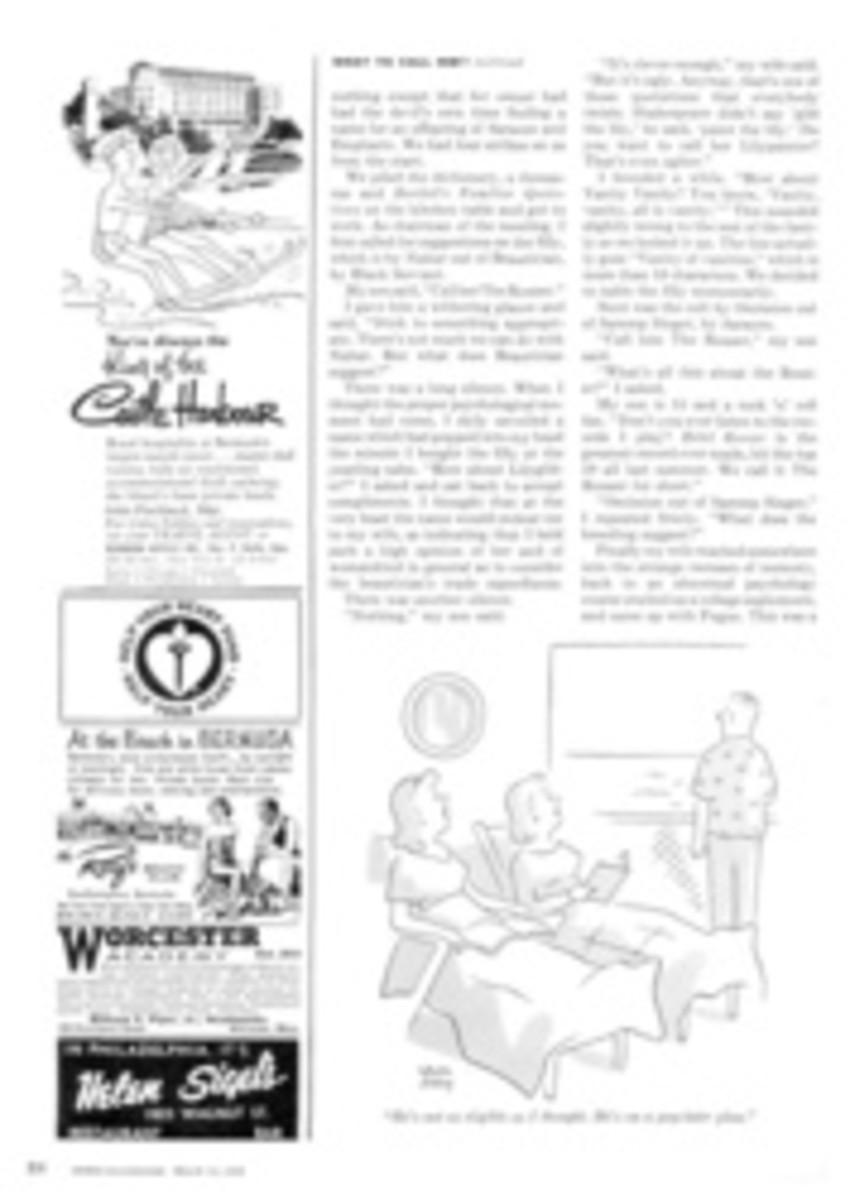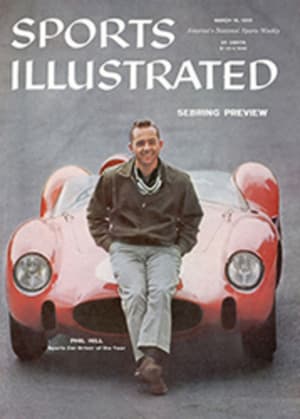
The surprising Americans
The North American Nordic ski championships at Squaw Valley were supposed to be a European sweep in jumping and cross-country events, just as the downhill racing the previous weekend (Feb. 21-24) had been essentially an American show, with only 14 foreign entries among 90 racers, none of them the cream of foreign competition. The major Alpine countries—Austria, Italy, France and Switzerland—had a gentlemen's agreement to stay away from Squaw Valley this year.
When the downhill skiers left, the atmosphere became less charged. It was like the winter meeting of an outsize 4-H club, several of whose members happened to be world ski and skating champions. Sweden's Sixten Jernberg, one of the greatest 30- and 40-kilometer skiers of all time, clumped happily through the mud on his bow legs, smiling, taking pictures and then handing his camera to a teammate so he could be photographed against a Squaw Valley background. Don McDermott of New Jersey, who can skate 500 meters pretty nearly as fast as anybody in the world, spent his spare time taking telephoto movies of girls in their skintight ski pants. The Norwegian cross-country team captain frisked from the valley floor through the deep powder snow to the top of Squaw Peak and lay down for a nap.
This is not to say the jumpers, cross-country racers and skaters were here just for laughs. All the Scandinavian teams brought doctors with them to make altitude tests on the athletes, and all the athletes were dead set on winning. Don McDermott, in one of his first practice sessions, spun off a 40.5-second 500 meters, only 3/10 second off the world record. The Finns went galumphing around the 30-kilometer cross-country course and emerged from the woods grunting "Hyva, hyva," which is Finnish for "Go, go."
CROSS-COUNTRY RACING
The events themselves went off in the same atmosphere. In the 30-kilometer cross-country, Jernberg put on a leg-pumping, pole-thrashing finish that wiped out an early lead by his nearest rival, the world 15-kilometer champion, Viekko Hakulinen. The moment he crossed the line Jernberg was whisked by Swedish doctors into a first-aid station for an altitude test. The doctors were very cozy about the results, but it was evident from the way he finished the race that Jernberg could carry an elephant to the top of Squaw Peak with damage only to the elephant.
A Finnish speed skater, Juhani Jarvinen, clocked 2:06.3 to set a new world standard in the 1,500 meters. In the 500-meter, two men tied for second behind Norway's Alv Gjestvang (Don McDermott came down with flu and could not race). One of them was the Russian, Gennadii Voronin, fresh from winning the world 500-meter title at Oslo. The other, to everyone's amazement, was Bill Disney, fresh from the small, stuffy indoor rinks of Los Angeles. And Disney was only one of several surprising Americans.
The winner of the 80-meter special jump was a flawless Finn named Kalevi Karkinen, whose second leap of 88½ meters (290 feet) was a model of grace and daring. But barely three feet behind Karkinen, and every bit as impressive in flight, was a Michigan youngster, Gene Kotlarek. Only 18, Kotlarek shows as much potential in jumping as Buddy Werner did at that age in the Alpine events. And Kotlarek is far more advanced in technique than Werner was. Alone among American jumpers he seems to have mastered the dangerously late take-off, in which the jumper waits, crouched, until his ski tips pass over the end of the jump. Then he springs far out, driving against the very lip of the jump, hurls his body forward until it is almost parallel with the skis, holds this seemingly suicidal position in an unwavering flight of nearly 300 feet, then goes down in the classic telemark position in an effortless landing. Heini Klopfer, designer of the jump, said of Kotlarek, "I think he is already among the top 10 jumpers in the world."
BIATHLON UPSET
Then Larry Damon of Burlington, Vt. scored an upset victory in the biathlon with the corrected time of 1:48:09.3. In the biathlon you ski 20 kilometers, pausing four times to take five shots at a target at each of four stations. Every miss adds two minutes to your skiing time. Damon hit the target 13 out of 20 times. Another American, Dick Mize of Gilman, Colo., who scored 19 hits, finished in second place. The Swede Klas Lestander, who was the favorite, came in third.
On that strong upbeat for the U.S., the North American championships, Squaw Valley's trial by fire, drew to a close after surviving every kind of trouble from a drenching rain to a flu epidemic that immobilized 110 people, including the head doctor. Even the giant IBM Ramac 305 score calculator caught cold one night when someone left the windows open. The next morning its mercury-wetted relay system was frozen, and for 20 minutes the infallible Ramac could neither add nor subtract.
On the whole, however, things went very right indeed. There remains one big imponderable for 1960—the weather. Suppose next year there is a blizzard, not the piddling sort which dropped first five feet and then three and a half feet on the valley just before the North Americans, but a real Sierra storm that unloads 10 or 12 feet of snow in the space of a few days?
Couldn't they, with 400 to 600 ski troops, pack the courses and clear the rinks even during a blizzard? "No," said Willy Schaeffler, director of ski events. "If a major Sierra snowstorm comes up, it is senseless to fight. We might just as well improve international relations by playing cards in the Olympic Village."
PHOTO
SHOOTING OFF JUMP AT SQUAW VALLEY, UNKNOWN GENE KOTLAREK SHOWS BEST FORM EVER ATTAINED BY A U.S. COMPETITOR

